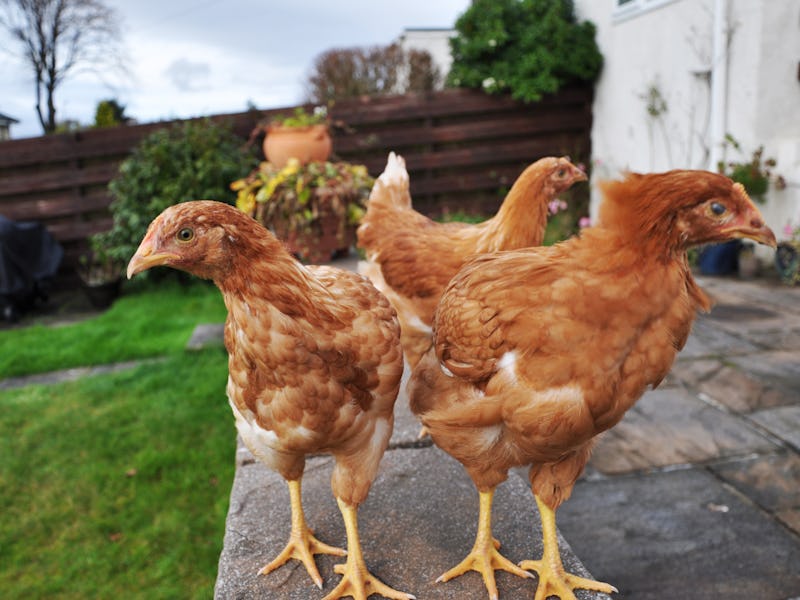Scientists Can Tweak Chicken Genes So They Grow Dinosaur Legs
Manipulation of repressed genes can turn things a bit more Jurassic.

A chicken is a dinosaur.
That’s the lesson that paleontologists want everyone to understand, anyway. But because evolution has turned the chicken from a triassic beast to the nuggets we know today, they’ve lost a handful of the genetic traits of their ancestors. Today, instead of breeding baby a Tyrannosaurus Rex, scientists can create chickenosauruses.
Modifying chickens to have dinosaur-like qualities is becoming an increasingly popular vein of study for scientists who want to figure out the blueprints of creating a dinosaur from scratch. In 2006, researchers from the University of Wisconsin were able to activate the formation of teeth by identifying and stimulating the repressed gene in chickens. But an international team of scientists recently decided to take it one step forward by growing dinosaur-like leg on chickens.
Researchers from the the Universidad del Chile and the Chinese Academy of Science detail their findings in the March edition of Evolution: They explain that while modern birds have a splinter-like fibula that is shorter than the tibia, these skeletal elements start out at essentially the same length as embryos. In dinosaurs, however, both of these bones were equally long. Their goal: Grow the bones of modern birds so they end up with dinosaur feet.
The took the fertilized eggs from several species of birds (chickens, ducks, pigeons, and finches) and stained the bones and cartilages so they could keep track of change of growth.
The tibia bone is the smaller, bent one.
The researchers found that if they activated a protein called “Indian hedgehog”, the bone maturation process would be shut off and the bird was able to grow a dinosaur-like fibula. This ability was evidenced across all of the bird samples and supported their hypothesis that the arms of a bird in embryo have the genetic capability of being tweaked into something a bit more archeopteryx-like.
Why did modern birds grow different lengths of bones compared to their ancestors? The researchers believe it wasn’t so much because of a need for adaptive evolution, but as a by-product of the different lifestyles the variety of birds have today. Wading birds like storks and herons and small-flighty birds like kingfishers don’t have a need for their fibula and tibia to be the same size so — after several lineages of Mesozoic birds — the size of the tibia increased.
Next up: figuring out how to turn back the clock on all of the modern-aspects of the chicken. But this won’t be an easy task — paleontologist Hans Larsson tells Motherboard it would be like “doing open-heart surgery, times one thousand.”